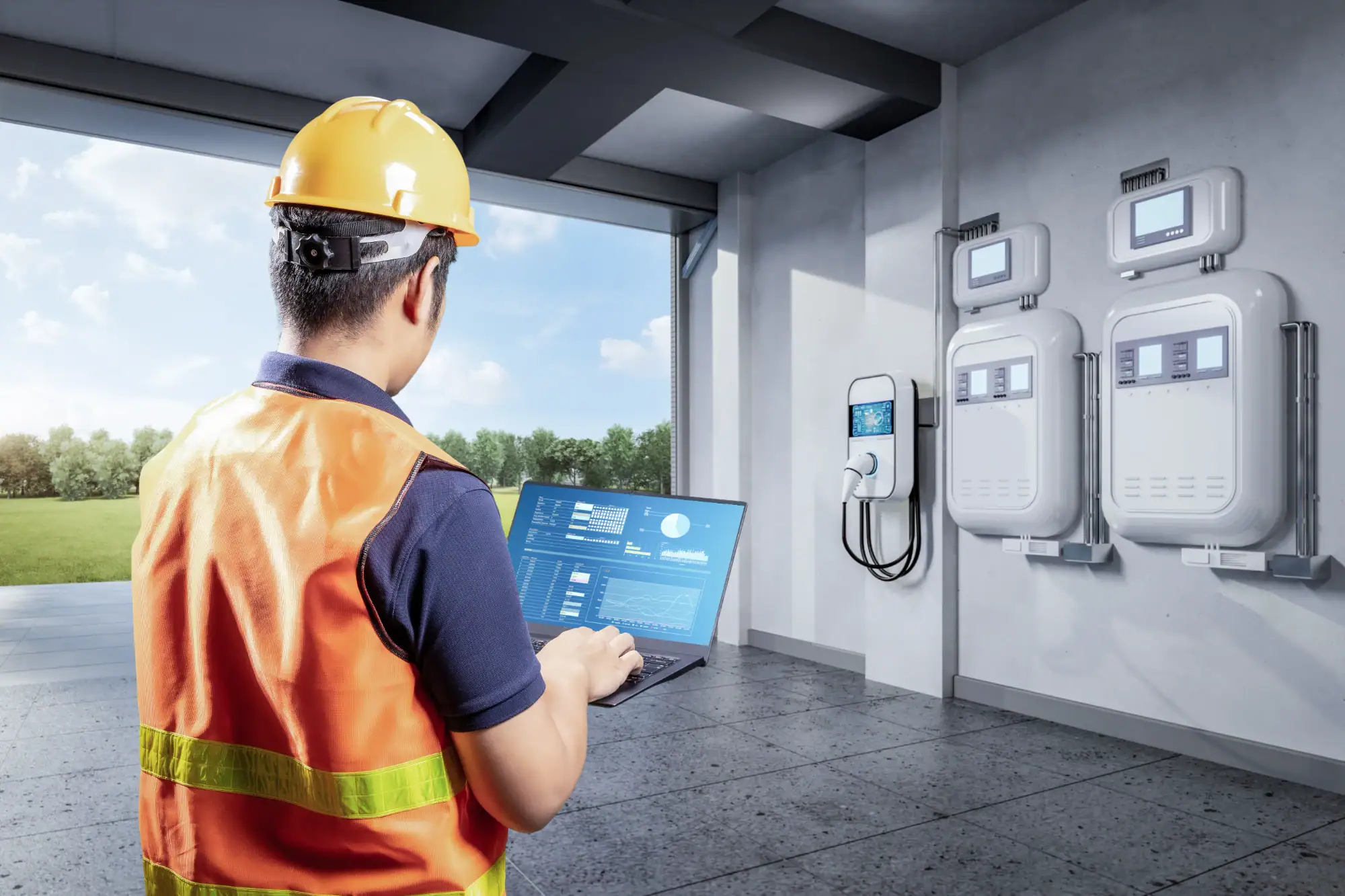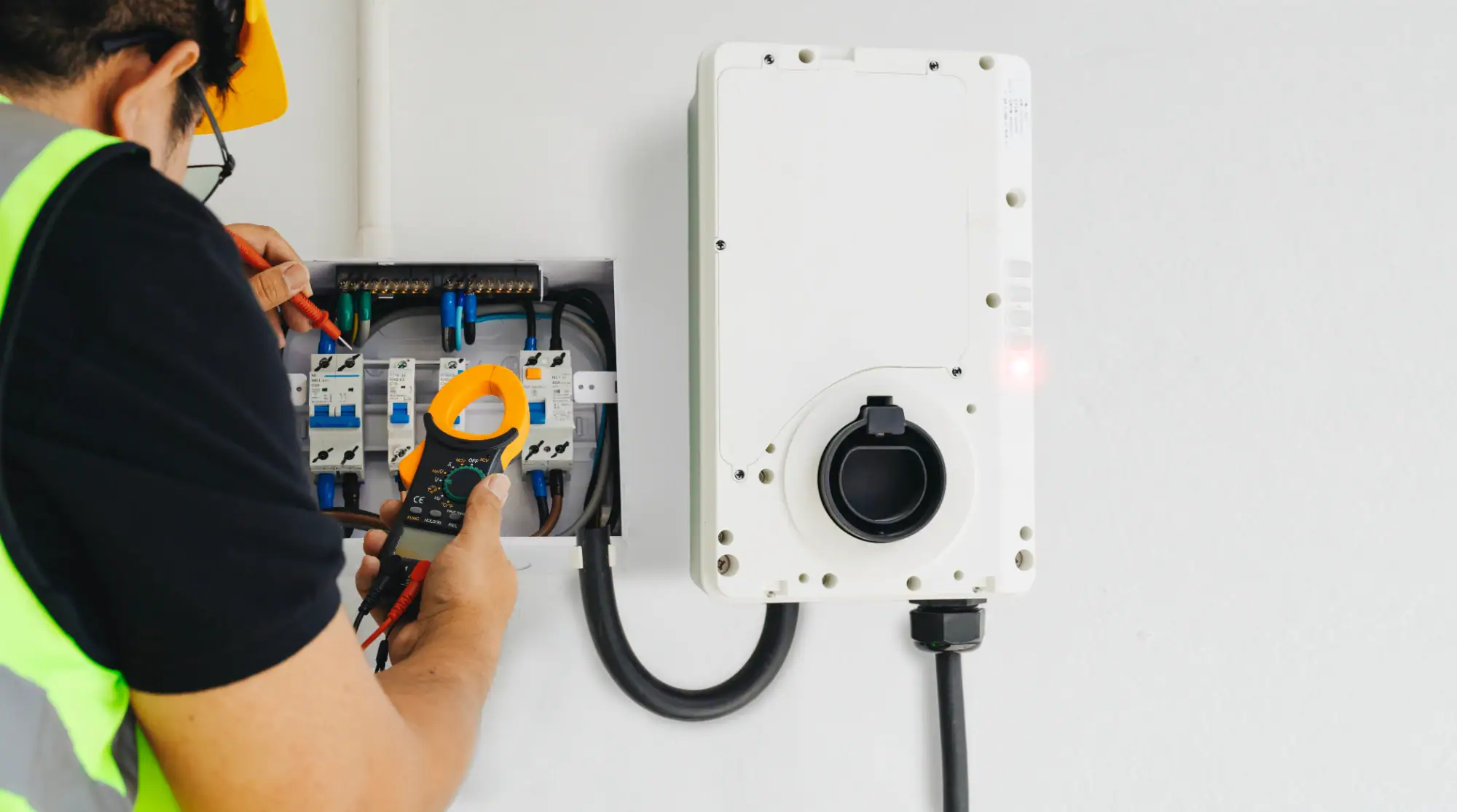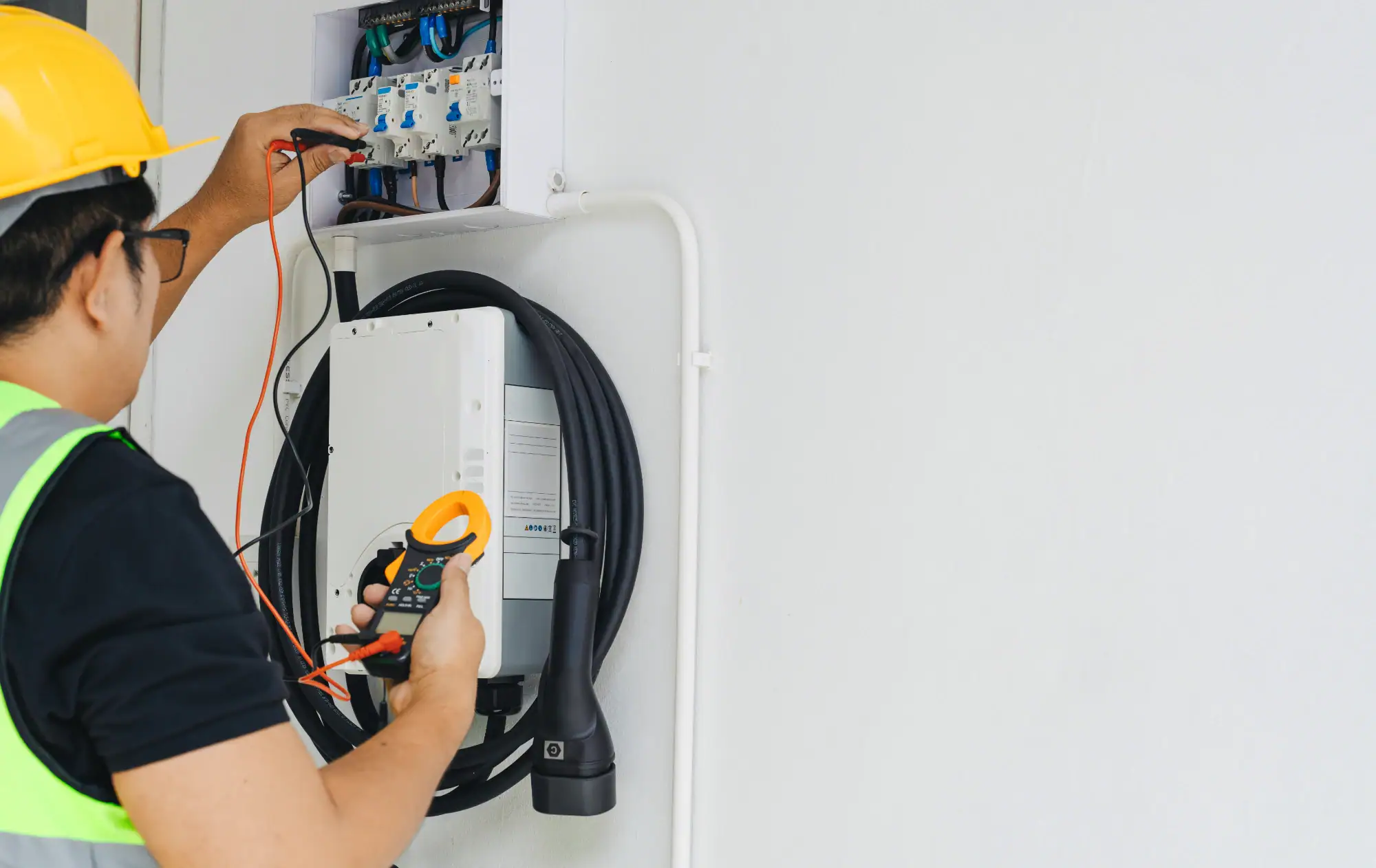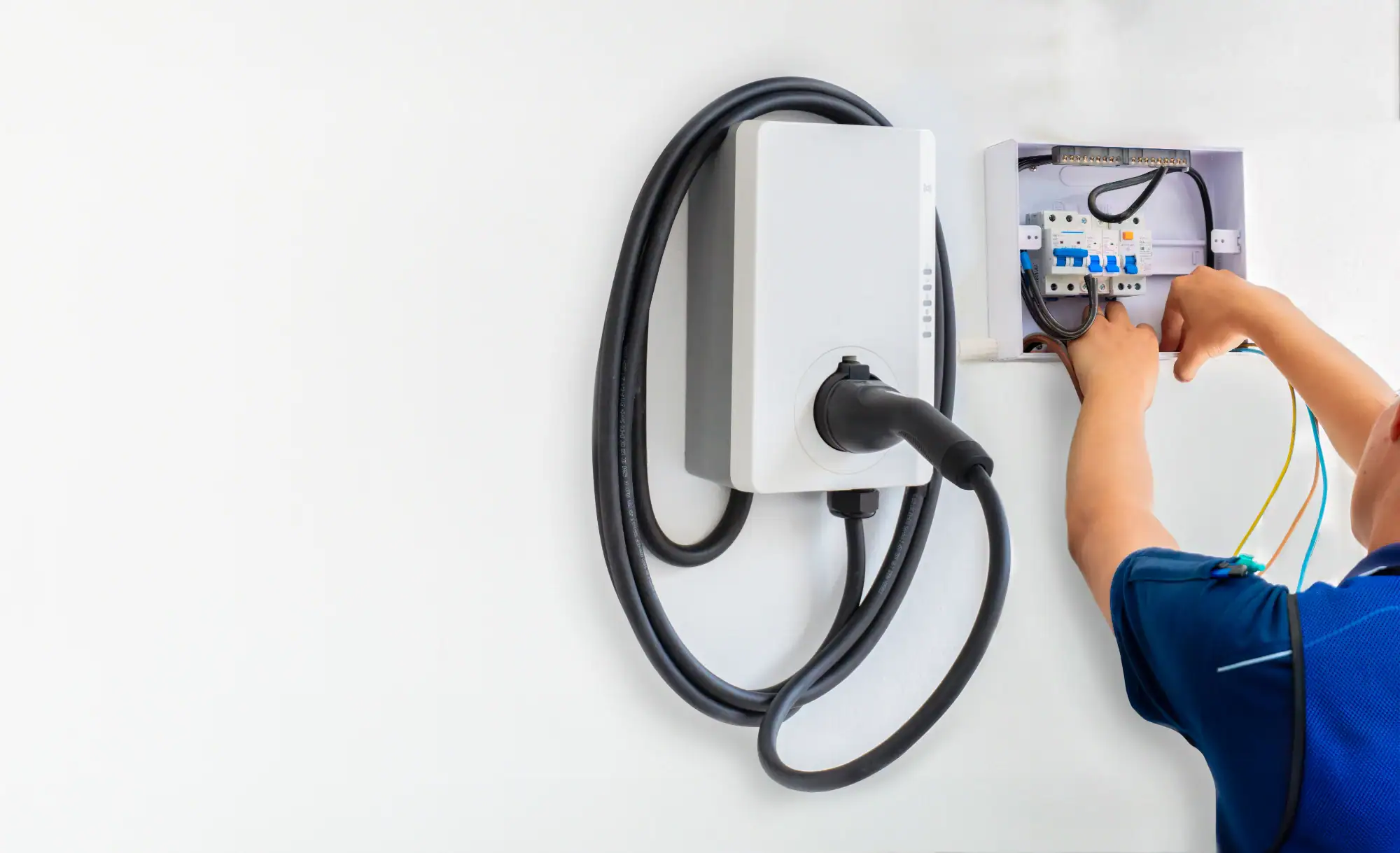Skip the public charging lines and fuel costs forever with professional home EV charger installation that pays for itself.

Hear from Our Customers

You pull into your garage after work, plug in your car, and forget about it. While you sleep, your EV charges completely using electricity that costs a fraction of gasoline. No more planning trips around charging stations or waiting 30 minutes at a public charger while your time ticks away.
Your monthly “fuel” bill drops from $200+ to under $50. Your car is always ready when you are. And you never have to worry about finding an available charging spot or dealing with broken public chargers again.
The math is simple: home charging costs about 3 cents per mile versus 12-15 cents per mile at public stations. For most drivers, that’s $1,500+ in annual savings that goes straight back into your pocket.
We’ve been Manhattan’s go-to electrical contractor since 1999, specializing in the residential electrical work that keeps homes safe and functional. We’ve handled everything from emergency repairs to complete panel upgrades, so we understand exactly what your home’s electrical system can and can’t handle.
Unlike companies that just started doing EV work last year, we’ve been installing dedicated circuits, upgrading electrical panels, and solving complex electrical challenges for decades. We know which homes in Manhattan need panel upgrades before adding a 50-amp EV circuit, and we can spot potential issues before they become expensive problems.
We’re licensed, bonded, and insured, with special discounts for military families, first responders, seniors, teachers, and students. When your EV charger needs to work perfectly every single day, experience matters.

We start with a thorough assessment of your home’s electrical system and your specific charging needs. This isn’t a quick glance at your panel—we calculate your existing electrical load, check your service capacity, and determine exactly what’s needed for a safe, code-compliant installation.
If your panel needs an upgrade or you need a new 240-volt circuit, we handle all the permits and inspections. We install the circuit, mount your charging station exactly where you want it, and test everything to make sure it works perfectly. Most installations take 4-6 hours, and we clean up completely when we’re done.
Before we leave, we walk you through how to use your new charger and answer any questions. You’ll have our contact information for any future needs, but these installations are built to last decades with minimal maintenance.

Ready to get started?
Every installation includes a complete electrical assessment, all necessary permits, and full code compliance. We install new 240-volt circuits when needed, upgrade electrical panels if required, and mount your charging station securely in your garage or designated location.
Manhattan homeowners can take advantage of ComEd rebates up to $3,750 for Level 2 charger installations, plus federal tax credits up to $1,000. We help you navigate these incentives to maximize your savings. Most of our customers end up paying significantly less than the sticker price after rebates and credits.
We work with all major charger brands and can install the unit you’ve already purchased or recommend options based on your vehicle and charging habits. Whether you drive a Tesla, Ford Lightning, or any other EV, we ensure your charging setup works perfectly with your specific vehicle and electrical system.
